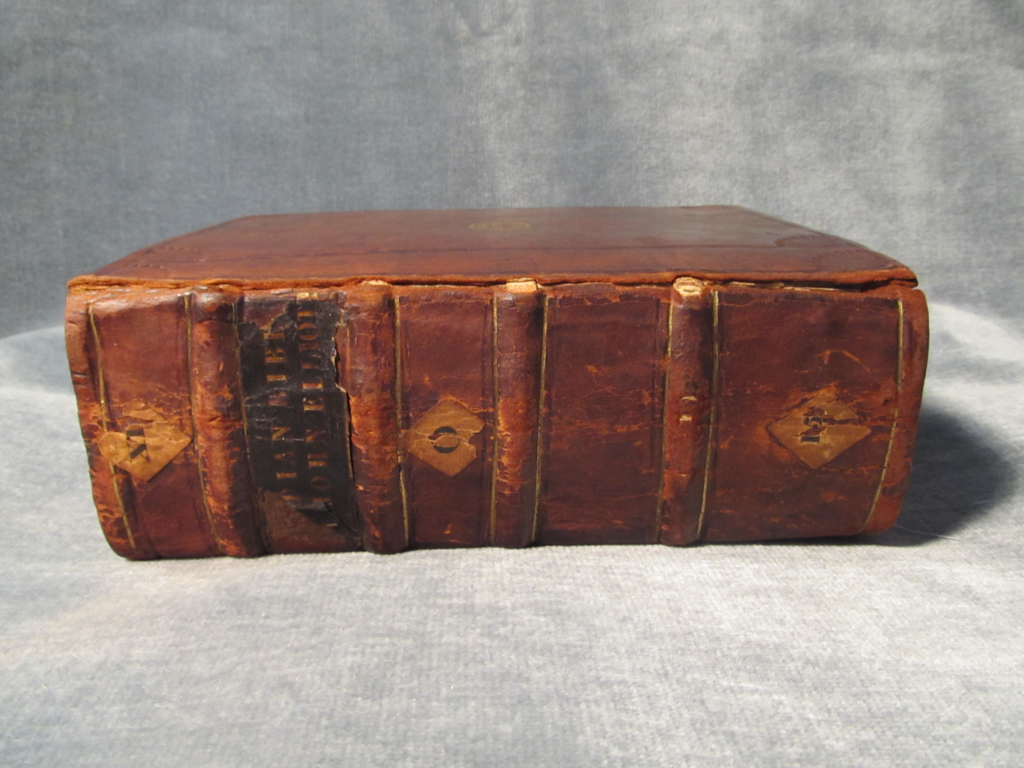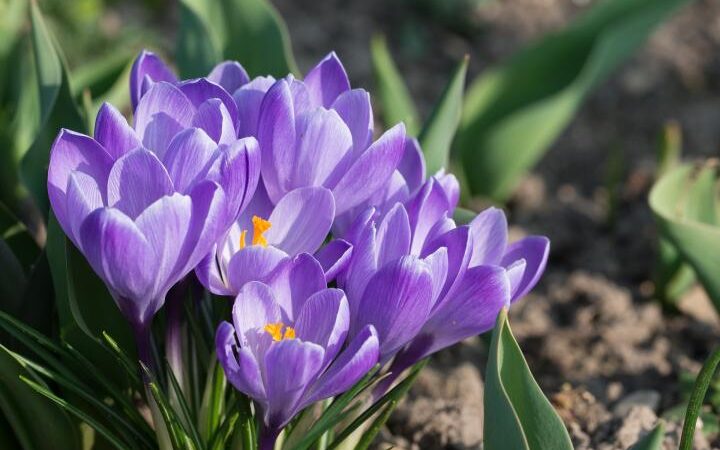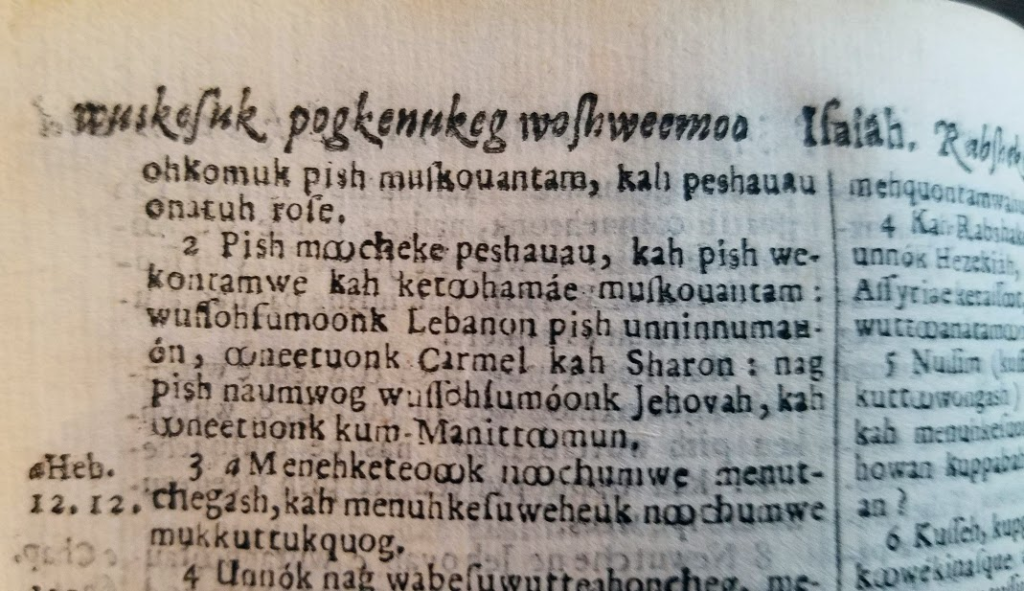Cro.vernus’warm’ mixture, Cro.vernus ‘cool’ mixture
Crocus can symbolize joy and romance as well as rebirth due to its early springtime blooming. The color of the crocus can also affect its meaning; the purple flowers can signify pride, while the white blooms represent purity. In this line from the Book of Isaiah, the crocus’ gladness is so great that it shouts for joy:
The desert and the parched land will be glad; the wilderness will rejoice and blossom. Like the crocus, it will burst into bloom; it will rejoice and shout for joy.
One of the greatest strengths of the Rosenbach is its collection of Americana, including books and documents related to the settlement of the Americas. Early printing in the colonies is illustrated by examples such as the Eliot Indian Bible, the first complete Bible printed in the Western Hemisphere in 1661-1663. Significantly, it is printed not in English but in the Natick language. John Eliot, a minister, devised a system for writing the language and translated the entire Bible. Native Americans had an active part in producing this Bible. Job Nesuton was instrumental in helping Eliot to learn Natick, and another, James Printer, a Nipmuc, worked as apprentice to the printers.)

On the first line, you’ll see the word “peshauau” which means blossom. Eliot has directly translated that line. But in the fourth line, you’ll see the word “muskouantam” which means ripened corn, not crocus. It seems that Eliot, Nesuton and Painter decided that ripened corn would work better than crocus here. Given that crocuses are not native to North America, the Natick would likely not have been familiar with it. For more on the Rosenbach’s Native American collections, visit the Guide to Rare Books and Documents Related to Native American History and Culture at The Rosenbach.
It is somewhat common knowledge that saffron seasoning comes from the vivid stigma and styles of the crocus. What is less well known is that not all crocus threads are edible. It is specifically the stigma and styles of crocus sativus or “saffron crocus” which are harvested, dried, and used in cooking. The saffron crocus blooms in this garden in the Fall. If you are visiting the garden in the spring, you will find the crocus vernus, whose stigma is inedible. Although the poet Emily Dickinson may have argued with us; she seems to have found the crocus vernus endlessly palatable and includes it in many of her poems. In this poem, the early spring bloomer plays the role of snow vassal.
The feet of people walking home
With gayer sandals go-
The Crocus-till she rises
The Vassal of the snow-
The lips at Hallelujah
Long years of practise bore
Till bye and bye these Bargemen
Walked singing on the shore.
Pearls are the Diver’s farthings
Extorted from the sea-
Pinions-the Seraph’s wagon
Pedestrian once-as we-
Night is the morning’s Canvas
Larceny-legacy-
Death, but our rapt attention
To Immortality.
My figures fail to tell me
How far the Village lies-
Whose peasants are the Angels-
Whose Cantons dot the skies-
My Classics veil their faces-
My faith that Dark adores-
Which from its solemn abbeys
Such resurrection pours.
-Emily Dickinson, 1858
The Rosenbach houses a collection of letters that Dickinson wrote to friends and family. To learn more, please visit https://youtu.be/oylzvlPGRNo


